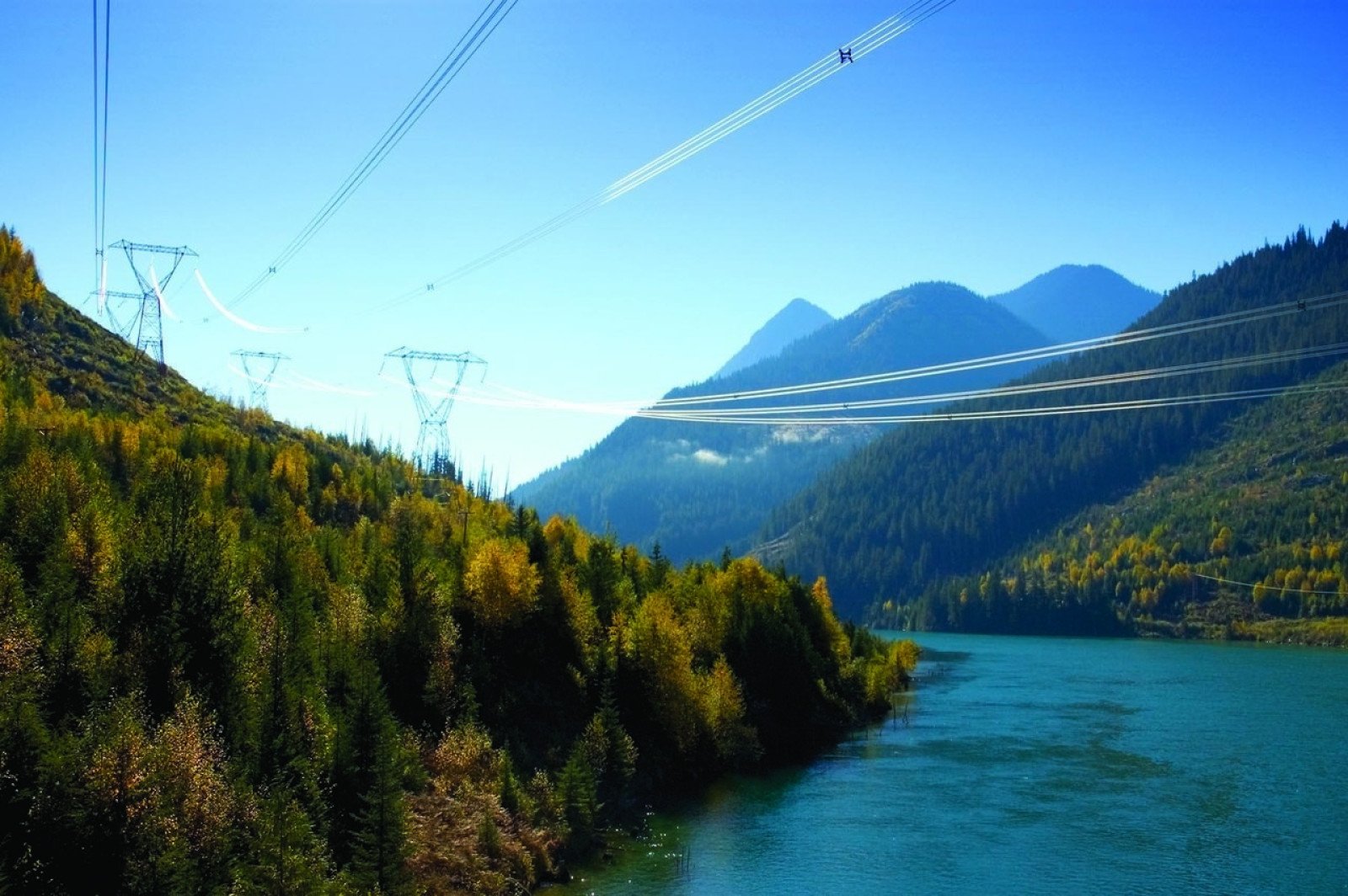The path of electricity
Learn how electricity is made and how it gets to where we need it.

Overview
From a dam in the mountains to your smartphone. The path of electricity shows how the potential energy of water, held in large reservoirs, is transformed into electrical energy that can be used to charge our devices.
Instructions
What you'll need
- Scissors
- Tape or glue
- Chart paper and markers
- "The path of electricity" worksheets for each student
- "The path of electricity" slideshow
- "The path of electricity" slideshow notes
- Have your students select a partner and get them talking with each other about what they know about the electricity that is in their homes and your school. As a group, have each pair provide some ideas or terms they’ve discussed.
- Put your students into groups of three or four. Have them cut the 10 statements from the "The path of electricity" worksheet and place them in an order which shows the process by which electricity is generated in B.C.
- Go through the "The path of electricity" slideshow. When you’re done, give your students a few minutes to reorder their statements.
- In their groups, students use the ordered statements to create quick sketches or symbols to represent the path of electricity on a piece of chart paper.
- Post the sketches around the room to use as a reference for future activities.
- Watch the video above with your class to review the concepts.
Modify or extend this activity
- Invite a facilities staff person from your school district to visit the class to talk about energy and electricity use and conservation within the school.
- The "How a dam works" activity includes a short video about hydroelectricity in B.C.
Curriculum Fit
Grade 7 Science
Content
- Electromagnetism
Curricular competencies
Questioning and predicting
- Demonstrate a sustained intellectual curiosity about a scientific topic or problem of personal interest
Processing and analyzing data and information
- Use scientific understanding to identify relationships and draw conclusions
Applying and innovating
- Co-operatively design projects
Communicating
- Communicate ideas, findings, and solutions to problems, using scientific language, representations, and digital technologies as appropriate
Assessments
Observe students during the group work and note their ability to:
- Identify questions while working in groups.
- Make logical guesses and self-check answers.
- Work collaboratively and actively engage in the activity.
Correct order of statements for the "The path of electricity" worksheet:
- A dam holds back water flowing down a river. The water is stored in a reservoir, a human-made lake above the dam and generating station.
- To make electricity, water from the reservoir travels down penstocks (large pipes) to the turbines (large wheels).
- The falling water spins the turbines and the turbines turn the generators. This generates electricity.
- The electricity travels over high-voltage wires called transmission lines to towns and cities.
- When electricity gets near a town or city, it goes into a substation. The voltage is lowered before it continues its journey.
- From the substation, the electricity is sent on different paths over wires called distribution lines. Distribution lines take the electricity to the street outside your home and school. Some distribution lines can be seen in the street and some are underground.
- Transformers lower the voltage before it enters buildings. The grey cylinders on power poles are transformers. Along the streets there are locked metal boxes with a sign, warning people not to touch them or play on them. These are also transformers.
- As the electricity enters your home, school, or any other building, it passes through a meter. The meter measures the amount of electricity used.
- The electricity then flows through wires in the wall, to outlets you can see in rooms.
- When you want to use something electrical, you plug it into an outlet and electricity powers your device.
Teaching Notes
The path of hydroelectricity starts at a hydro dam. The reservoir collects water that has run-off mountains (melting snow and ice) and rainwater. The water is channelled through the dam by large pipes, called penstocks, to turbines. The energy of the falling water is used to turn the turbines, which generate electricity.
The electricity moves from the turbines to step-up transformers to increase the voltage of the electricity, then travels long distances over high-voltage wires called transmission lines. Transmission lines are suspended above the ground by giant metal towers that are insulated to prevent electrical energy from traveling to the ground.
When transmission lines get close to a town or city, they are directed into substations. A substation contains many wires and transformers and is surrounded by a wire fence, and is where the voltage is lowered. The electricity is then rerouted along the power lines we see in our communities.
Power lines are sometimes buried underground but often suspended by power poles to distribute the electricity to your neighbourhood. The grey cylinders on power poles are transformers that further reduce the voltage so that the electricity is safe to be sent into homes, schools and businesses. Pad-mounted transformers, the locked metal boxes you see on some street corners, are used in those areas where the power lines run underground.
Meters measure the amount of electricity that passes through them and into homes, schools and businesses. Wires in these spaces get the electricity to electrical outlets so we can use it to power lights, computers, devices, appliances and machines.







